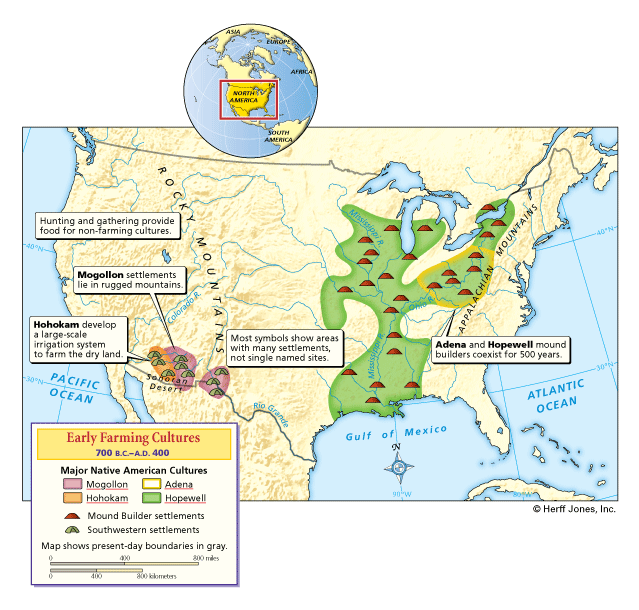
"Mogollon" is the name given by archeologists to a culture that lived in the American Southwest between 500 B.C. and A.D. 1300. The Mogollon people lived in pit houses or pueblos, grew corn, and made distinctive pottery decorated with figures or sharp lines. They also hunted and gathered wild plants and animals. The modern Hopi and Zuni may be their descendents.
"Hohokam" is the name given by archeologists to a culture that lived in the American Southwest between 300 B.C. and A.D. 1200. Their irrigation system, the first in the region, was used to grow cotton, corn, beans, and squash. The Pima are believed to be their descendents.
"Adena" is the name given by archeologists to a culture that lived in the American Midwest between 700 B.C. and about 100 B.C. The Adena built earthen burial mounds. The Adena lived in small settlements in circular wooden homes. Unusually for the Americas, they did not grow corn. The corn of the time could not grow in colder regions. The Adena culture developed into the Hopewell culture.
"Hopewell" is the name given by archeologists to a culture that lived in the American Midwest from about 100 B.C. to A.D. 500. The Hopewell greatly expanded the extent of the Adena culture. Mound building became more complex. Trade networks expanded to the Rockies, the Atlantic Ocean, and the Gulf of Mexico. They continued to live in small settlements supported by agriculture, hunting, and gathering. Corn was still not part of their diet.